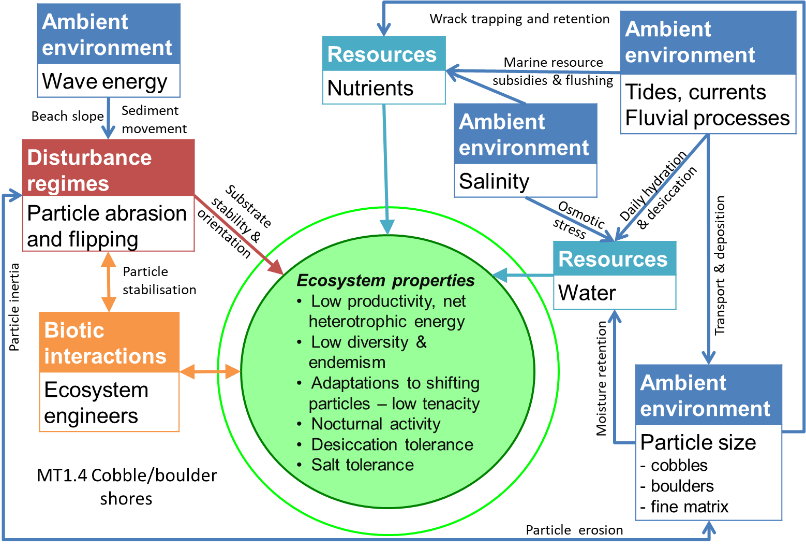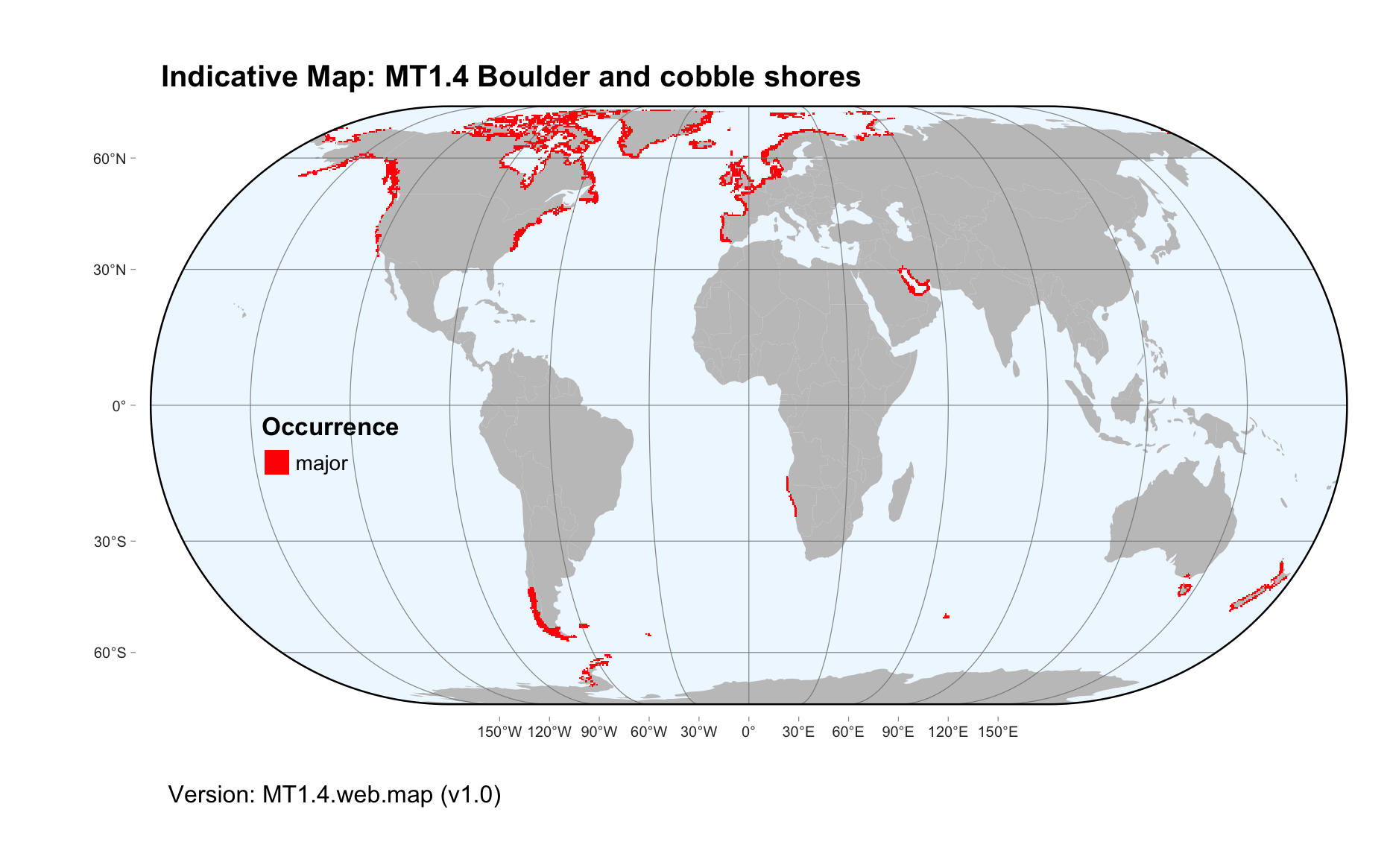Global ecosystem typology
Alternative site for the Global ecosystem typology with additional information for ecosystem profiles and indicative maps.
This site is maintained by jrfep
MT1.4 Boulder and cobble shores
Biome: MT1. Shorelines biome
Contributors:
(texts)
Cobbled and boulder shores are exposed to wave action and tides, and are periodically restructured by high-energy storm events. Drift seaweed and local algae support communities of organisms adapted to regular disturbance and grinding of rocks and cobbles, as well as the high temperatures and desiccation common to all shorelines. For example, many live largely below the surface layers. Stability of the substrate, and hence the biota, depends on the size of the cobbles and boulders. Some encrusting species or algae like cordgrass can stabilise these shores and allow a wider range of plants and animals to establish.
Key Features
Unstable intertidal hard substrate, that supports encrusting and fouling species at low elevations and in some instances vegetation, though largely dependent on allocthonous production.
Overview of distribution
High-latitude shorelines receiving cobbles from rivers, glaciers or erosion of cliffs.
Profile versions
- v1.0 (2020-01-20): MJ Bishop; DA Keith
- v2.0 (2020-07-31): MJ Bishop; SL McSweeney; AH Altieri; DA Keith
- v2.01 ():
- v2.1 (2022-04-06): MJ Bishop; SL McSweeney; AH Altieri; DA Keith Full profile available at official site
Main references
Selected references for this functional group:
Altieri AH, Silliman BR, Bertness MD (2007) Hierarchical organization via a facilitation cascade in intertidal cordgrass bed communities The American Naturalist 169: 195-206 DOI:10.1086/510603
Scott GAM (1963) The ecology of shingle beach plants Journal of Ecology 51: 517-527 DOI:10.2307/2257745
Diagrammatic assembly model

Maps
Maps are indicative of global distribution patterns are not intended to represent fine-scale patterns. The maps show areas of the world containing major (coloured red) or minor occurrences (coloured yellow) of each ecosystem functional group. See general notes on maps.
There are 2 alternative versions of the indicative map for this functional group, please compare description and sources below.
MT1.4.IM.grid_v2.0
Datasets
- MEOW-2008
Map references
Spalding MD, Fox HE, Allen GR, Davidson N, Ferdaña ZA, Finlayson M, Halpern BS, Jorge MA, Lombana A, Lourie SA, Martin KD, McManus E, Molnar J, Recchia CA, Robertson J (2007) Marine ecoregions of the world: a bioregionalization of coastal and shelf areas. Bioscience 57: 573–583. DOI:10.1641/B570707
MT1.4.web.map_v1.0

Datasets
- MEOW-2008
Map references
Spalding MD, Fox HE, Allen GR, Davidson N, Ferdaña ZA, Finlayson M, Halpern BS, Jorge MA, Lombana A, Lourie SA, Martin KD, McManus E, Molnar J, Recchia CA, Robertson J (2007) Marine ecoregions of the world: a bioregionalization of coastal and shelf areas. Bioscience 57: 573–583. DOI:10.1641/B570707
Check: the Glossary / Profile structure / the public document